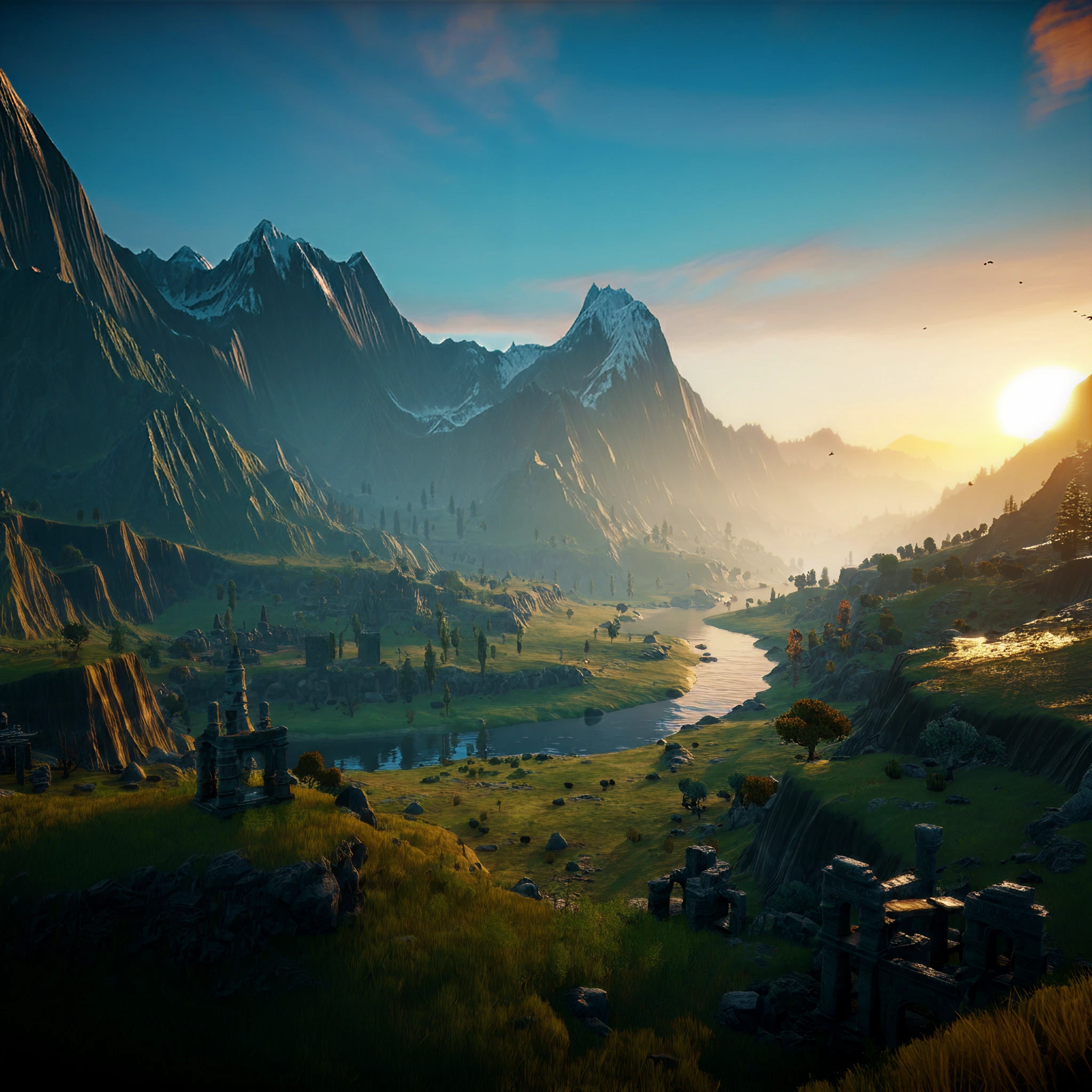Open-world games are much more than a genre; they’re an evolving phenomenon in the gaming world. They invite players into immersive, sprawling universes where freedom and exploration are the main attractions. Whether it’s adventuring across a war-torn continent or exploring bustling, dynamic cities, open-world games offer players unparalleled agency and opportunities for discovery.
This article dives deep into open-world games, their defining features, how they’ve evolved, and why gamers can’t get enough of them. We’ll also spotlight some of the most iconic titles that have shaped this genre.
What Are Open-World Games?
At their core, open-world games are titles that allow players to freely explore expansive maps filled with interactive environments, characters, and quests. Unlike linear games, these create a sense of freedom by prioritizing exploration and non-linear gameplay.
Key elements that define open-world games include:
- Large Maps: Expansive areas to traverse, often rich with geographical and cultural diversity.
- Freedom of Choice: Players decide where to go, what to do, and how to tackle missions.
- Dynamic World Interaction: From interacting with NPCs to altering the game environment, a living, breathing world is integral to the experience.
- Side Quests: Engaging in optional adventures that add depth to the main storyline.
The Evolution of Open-World Games
Open-world gaming didn’t happen overnight. It’s been a genre decades in the making, evolving hand in hand with technology and creativity.
- Early Days
The seeds of open-world design can be found in early titles like The Legend of Zelda (1986) and Elite (1984). While limited by hardware, these games hinted at the potential for vast, explorable worlds.
- The 3D Revolution
The shift to 3D gaming in the late ’90s unlocked new possibilities. Titles like Grand Theft Auto III (2001) raised the bar with a fully explorable city teeming with side activities.
- Modern Innovation
Today, open-world games like The Witcher 3 and Red Dead Redemption 2 combine detailed worlds with rich storytelling, dynamic characters, and breathtaking graphics. The introduction of AI-driven NPCs, real-time weather effects, and non-linear narratives has elevated the genre to cinematic levels.
Key Mechanics and Features
Here are the elements that make open-world games stand out in the gaming industry:
- Exploration & Discovery
Players wield the thrill of uncovering hidden treasures, rare enemies, and undiscovered areas. Titles like Elden Ring epitomize how exploration remains exciting even after hours of gameplay.
- Non-Linear Storytelling
Red Dead Redemption 2, for example, allows the player to progress through its main narrative but also live the life of a cowboy through surrounding stories like hunting or helping strangers.
- Environmental Storytelling
Through abandoned buildings, weathered artifacts, and shifting environments, games like The Witcher 3 tell stories without saying a word.
- Interactivity
Players impact their world, from how NPCs respond to their actions (Grand Theft Auto) to crafting alliances or making moral decisions that shape outcomes (Cyberpunk 2077).
- Replayability
With branching narratives and a dynamic world, each playthrough can offer something new, making these games timeless treasures for gamers.
Top Open-World Games of All Time
Here are some iconic open-world games that continue to set benchmarks for the genre:
1. Grand Theft Auto V
Arguably the most famous open-world game, GTA V merges action-packed missions with free-roaming chaos. Its massive map, filled with diverse activities, stands out even a decade after release.
2. The Witcher 3: Wild Hunt
A masterpiece of storytelling, The Witcher 3 immerses players in a dark and complex fantasy world. Its rich lore, compelling side quests, and fluid combat make it legendary.
3. Red Dead Redemption 2
Rockstar’s Western epic redefined open-world games, offering a living world where every NPC has a purpose, and landscapes pulse with life.
4. Elden Ring
A recent gem, Elden Ring combines the lore-building of George R.R. Martin with FromSoftware’s signature gameplay, creating an open-world experience that’s as challenging as it is vast.
5. The Legend of Zelda: Breath of the Wild
An innovative breath of fresh air in 2017, its physics-based puzzle-solving and detailed sandbox made it an instant classic.
The Impact of Open-World Games on Gaming
Open-world games have revolutionized the way games are developed and played. Here’s a closer look at their impact on the industry:
- Pushed Technological Boundaries: These games demand seamless rendering, complex physics systems, and sophisticated AI to bring their worlds to life.
- Changed Player Expectations: Gamers now expect freedom, interactivity, and expansive maps in modern titles.
- Expanded Storytelling Horizons: Open-world structures allow for both global narratives and intimate stories, often delivered simultaneously.
- Industry Economic Boost: AAA open-world games are top revenue drivers for studios, becoming cultural phenomena that extend to merchandise, films, and more.
Get Lost in an Open World
Open-world games continue to push boundaries, offering immersive experiences that stay with players long after the credits roll. Whether you’re hunting monsters in The Witcher 3, surviving the Wild West in Red Dead Redemption 2, or exploring unpredictable lands in Elden Ring, there’s an open-world game waiting for you.
Want to explore new realms but aren’t sure where to start? Check out our curated guide to open-world games and pick your next adventure!








